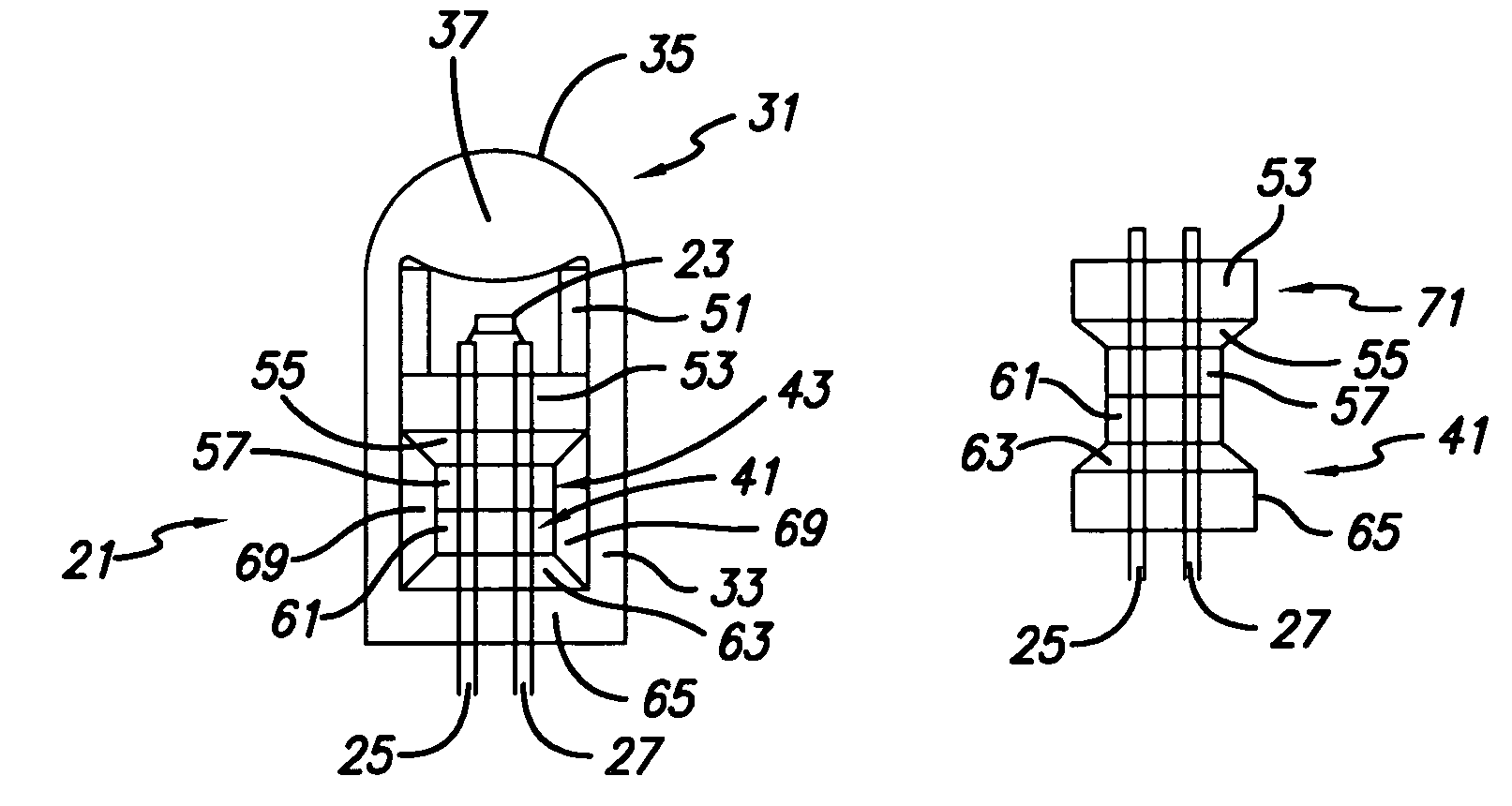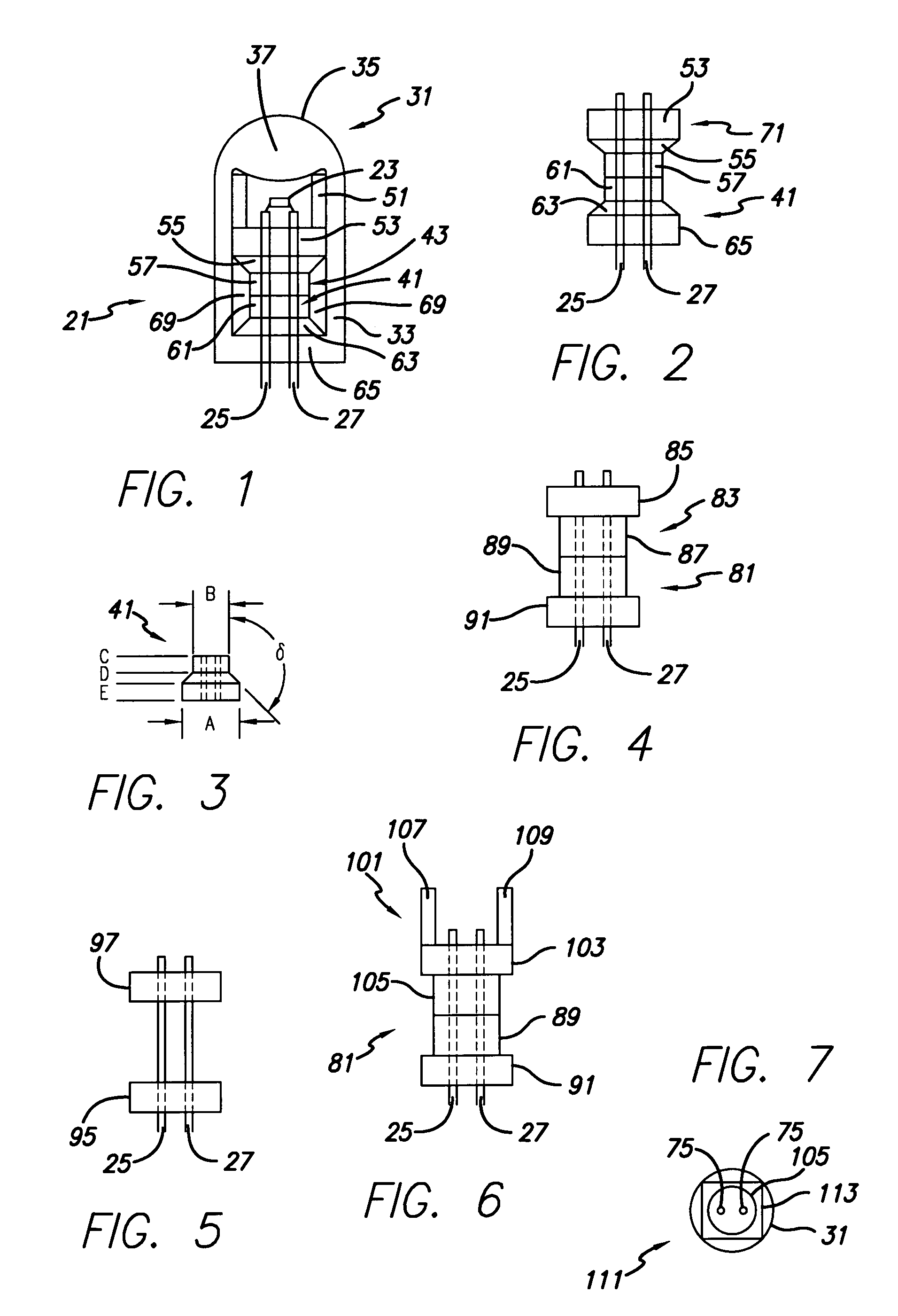Spacer bead geometry for controlled sealing stability
a spacer bead and stability technology, applied in the direction of incadescent body mounting/support, gas-filled discharge tubes, incadescent envelopes/vessels, etc., can solve the problems of significant increase in cost, waste of lamps during inspection, and assembly subject to forces that are out of proportion, so as to achieve the effect of avoiding the instability of the envelop
- Summary
- Abstract
- Description
- Claims
- Application Information
AI Technical Summary
Benefits of technology
Problems solved by technology
Method used
Image
Examples
Embodiment Construction
[0021]FIG. 1 is a plan view of a small incandescent lamp 21 of a well known construction, typically used for high intensity lamp applications. The lamp 21 includes a filament 23 that is attached at either of its ends to filament support legs 25 and 27 which are spaced apart conductors, typically 0.010 Dumet wire for small lamp applications. A glass envelope 31 has generally cylindrical side walls 33 and an end portion 35. End portion 35 has an optionally internally thickened portion 37 acting as a lens 37.
[0022]Internal structures in and around the filament support legs 25 and 27 and filament 23 may be seen as separate or as blended into the surrounding glass envelope 31 or into each other depending upon the level of processing. Some dividing lines are shown for purposes of discussion and to emphasize starting materials, but any combination of materials, once processed may lose their separate nature.
[0023]A lower bead structure 41 is shown having a line of separation with respect to...
PUM
 Login to View More
Login to View More Abstract
Description
Claims
Application Information
 Login to View More
Login to View More - R&D
- Intellectual Property
- Life Sciences
- Materials
- Tech Scout
- Unparalleled Data Quality
- Higher Quality Content
- 60% Fewer Hallucinations
Browse by: Latest US Patents, China's latest patents, Technical Efficacy Thesaurus, Application Domain, Technology Topic, Popular Technical Reports.
© 2025 PatSnap. All rights reserved.Legal|Privacy policy|Modern Slavery Act Transparency Statement|Sitemap|About US| Contact US: help@patsnap.com


